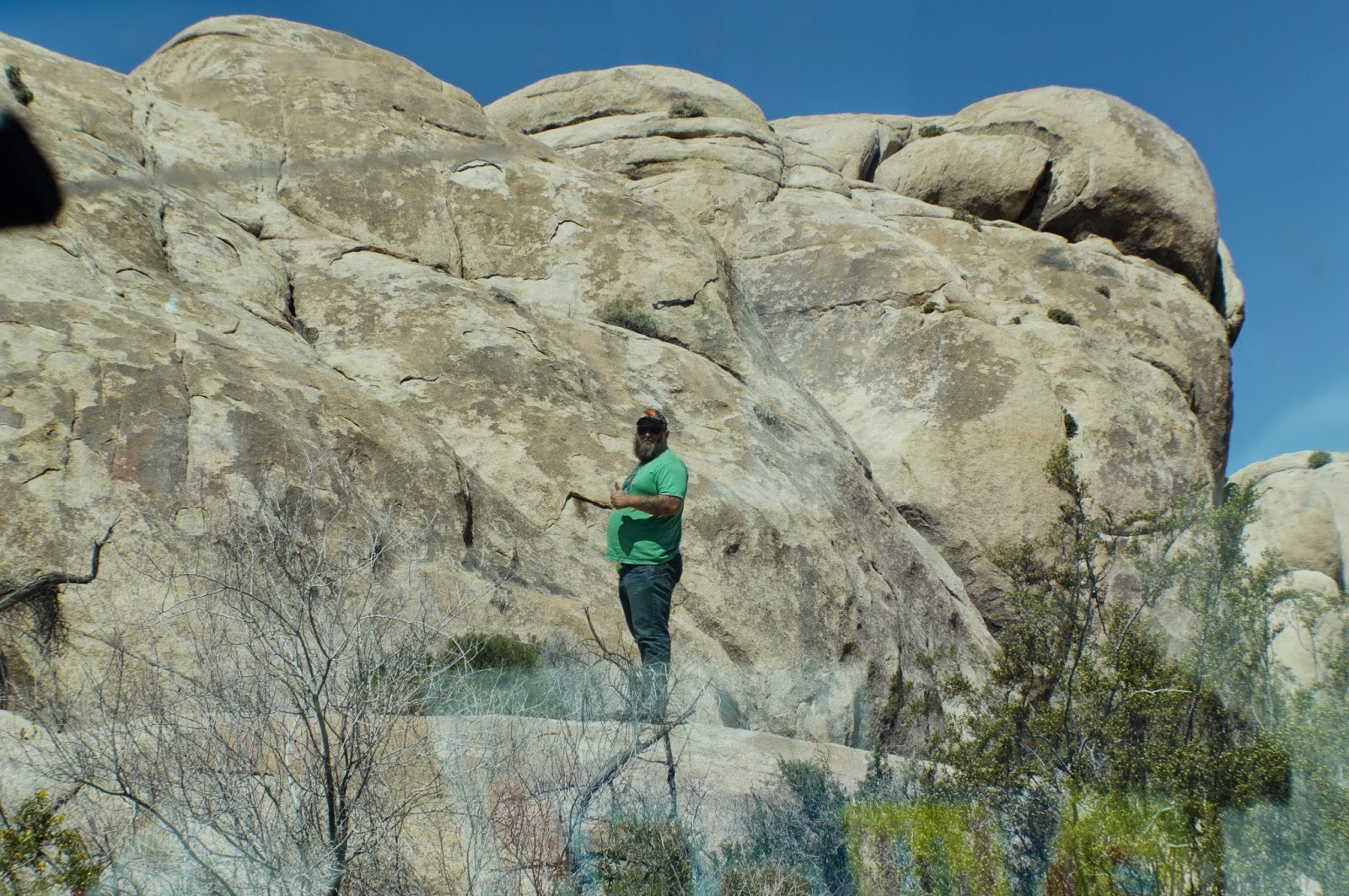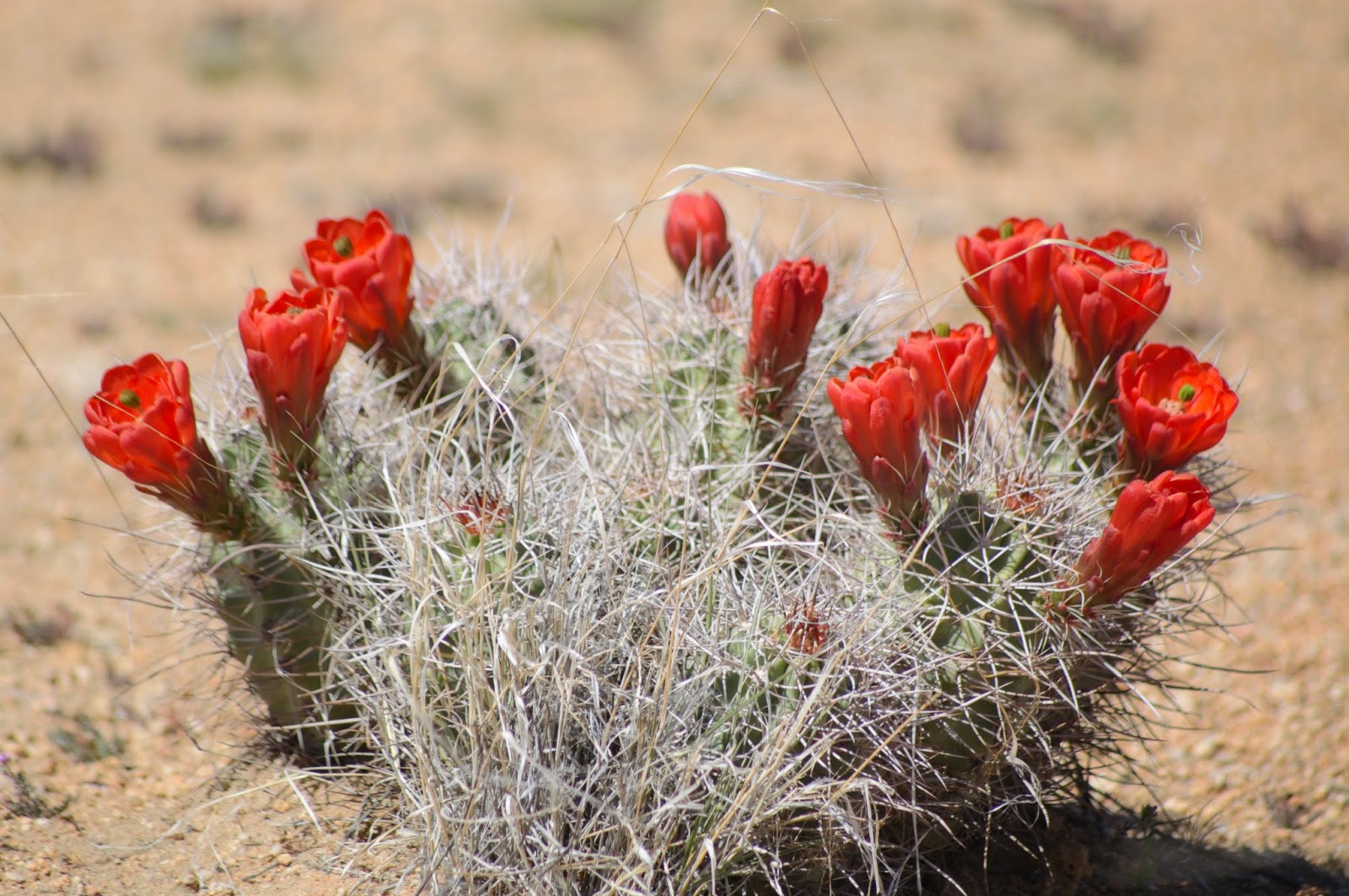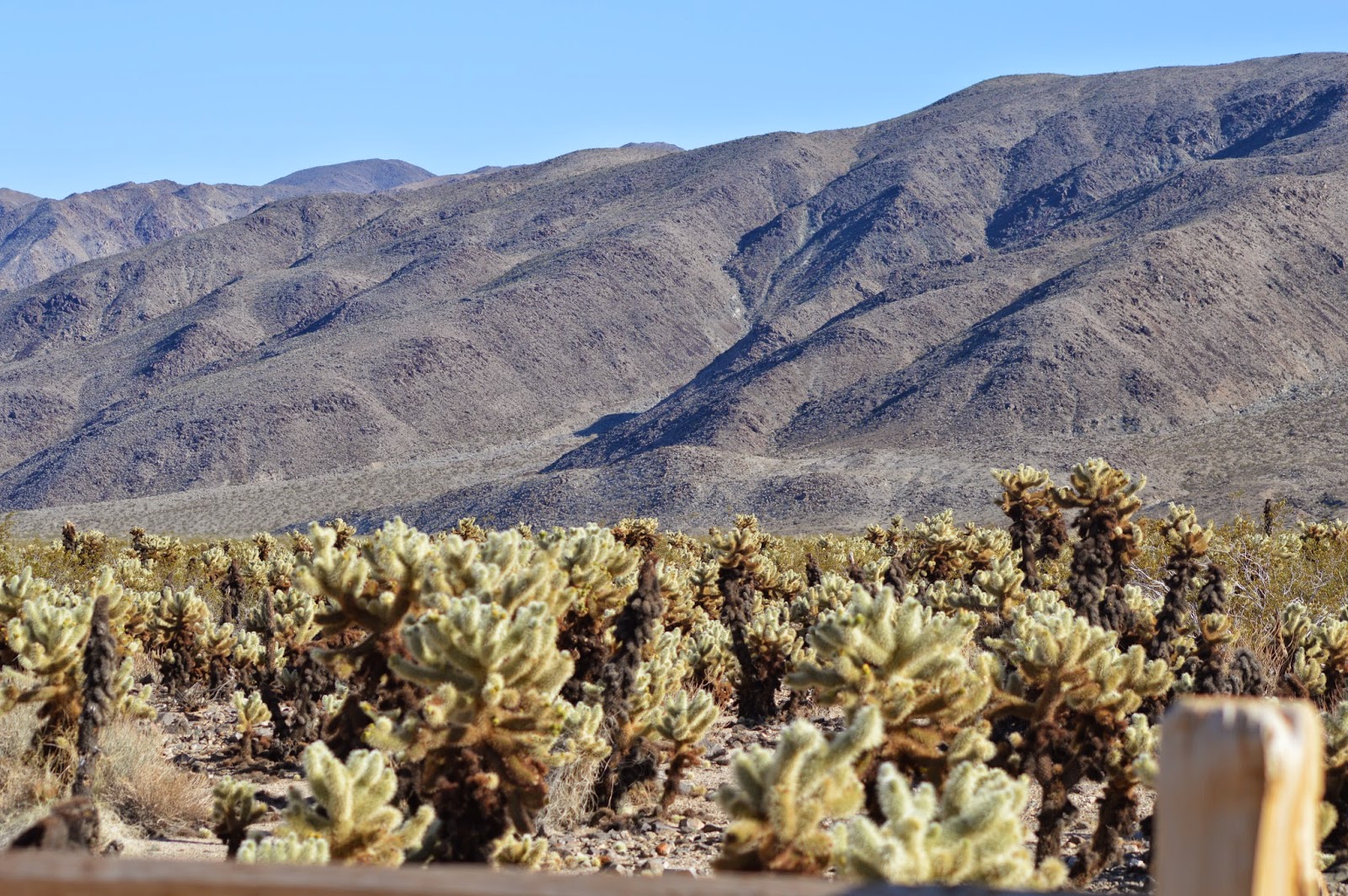I'm incredibly sad to say that I personally enjoyed most of Joshua Tree National Park from the car. A few days before we left Julian I got really sick. Couldn't get out of bed for two days sick. My husband, though, is gracious, and we both knew that for several reasons we needed to move on, so he prepped the car and the camper (normally my job) to move and loaded me into the car. I slept most of the way and was able to rest the night we arrived.
I woke up feeling considerably better, but it was hot in the desert and I was still feeling a little off, so we opted for the car tour of the park. One of the best things about Joshua Tree, in my opinion, is that it's size is manageable. In one full day we were able to drive the whole park, get out for a few short hikes (okay, I got out for one, but John took the kids on a few), and see the most popular viewpoints.
The geography of Joshua Tree is incredibly interesting. The park is the meeting place of the Mojave and Colorado Deserts (the Colorado Desert is often called the Sonoran Desert because it's the same Sonoran Desert that spans all the way to Mexico, but technically, on the American side it's called the Colorado). As I was browsing our pictures I wished that I had paid more attention to taking pictures that displayed the differences between the two. I didn't, so we'll have to do with my laymans explanation --
The Mojave Desert is a high desert, so it has more vegetation and is greener than the low Colorado Desert. This has virtually nothing to do with rain fall, rather it has to do with alternate water sources (likes oasis' and springs) and elevation.
This, friends, is a Joshua Tree. They are abundant in the higher Mojave Desert. Before we visited the park I had only ever seen one on the cover of a U2 CD in the 90's. They are the tallest thing that grows in this portion of the Mojave (my guess is that the tallest we saw about about seven feet tall) and they look like this when they bloom...
The lower Colorado Desert looks more like this...
The green, leafy plants that in the Joshua Tree picture give way to brown bushy plants and stray trees. The kids also observed that the geology was different in the lower desert, with much more abundant, larger rock formations, which they of course loved for climbing purposes.
The entire park did have interesting cactus with pops of color, which Rogue would not let me pass without photographing. The big kids completed the Junior Ranger handbook while we were there and much of the material that was covered helped them learn to identify the different types of cactus in the park by the flower that they produced.
The park also has a lot of mining history. The decaying quartz (quartz is a sign of the presence of gold) that John first noticed in the Anza Boreggo State Park was also present at Joshua Tree and we learned that miners also dug for silver and other less precious minerals over the years. the park has preserved what they can in relation the regions mining days and we took a short hike to the remains of a mining "cabin" and overlooked one of the major mining areas.
Gunnar and Patton both insisted that it is not technically a cabin if it's made out of rocks. Still, at this point the two of them have seen many traditional miners cabins and I was grateful for them to be able to see that people used what was available to them to make shelter. In this case, they used rocks.
This is the view of from the mining cabin. This draw was full of mining shafts that the park service had covered up for public safety.
The coolest part of this hike (for me, anyway) was that as I was taking the picture above a sweet lady asked me if I was getting nervous about John and the kids being so close to the edge of the cliff. We laughed about the constant state of nervousness that sometimes takes over motherhood and from there we started chatting while John and the kids explored the area. She (Trudy) and her husband (Jim) were from the San Franciso area and he had just retired from the Fire Department. Now on common ground we started talking post retirement plans and we shared our plan with them. They weighed in the on side of thinking that our decision to travel was one of the coolest things they ever had ever heard. They also planned to travel more in their retirement, so we were able to trade travel tips and suggestions. Their home is near George Lucas's studio, so they gave use the inside scoop about filming Star Wars and some off beat things to see in their area. We, of course, suggested strongly that they spend some time in interior Alaska, in the winter, when the best things about Alaska about abundant. It was just 15 minutes of our day that we shared, but honestly, those encounters with random people have been the best part of our travels so far.
This photo...
...is of the Hidden Valley area of the park, It's the most dense Joshua Tree "forest".
This is one of the most popular viewpoints in the park. It's called the Keys View. Even this far east smog is an issue, and it's one we ran into on this day. On a clear day, though, you can see all the way to Mexico.
We were able to see Palm Springs...
Our last stop for the day was the Cholla Cactus Garden, the most condensed area of Cholla growth in the park.
In additon to the things we saw (and photographed) the park contains a Ranch (the Keys Ranch) that you can tour for an additional cost, an auto tour that is specific to the geology of the deserts, and lots of rock climbing (Skull Rock is particularly popular, I hear). While it is less busy than some of the more popular parks, our campground (Cottonwood) had the only three available spots in the entire park each of the three nights that we were there, so we were felt really fortunate that our last minute change of course didn't prevent us from getting a camping spot and enjoying the park. Joshua Tree is definitely worth a weekend trip.
On the morning we left our kids turned in their Junior Ranger Handbooks and got their badges. They are now at six Jr. Ranger badges and they really love it. I'm consistently impressed at the material that NPS provides at both parks and historical sites. It's such a relief for me to know that I can count on their material to adequately cover both history and science in a way that is efficient and enjoyable. Honestly, the whole family learns from the handbooks. If you're planning on visiting a National Park with your kids this summer (or ever), we strongly recommend taking the time to look into the Jr. Ranger Program.
So, Joshua Tree was awesome and we're glad that we made the change in our itinerary. We definitely recommend it if you're ever in Southern California!
And if you're going to go to Joshua Tree you can't pass this up...
The General George S. Patton Memorial Museum. Our course, with our affinity for Patton we could not pass it up. It's a small private museum with lots of memorabilia from every war from WWII to OEF, so I didn't take many pictures, but we would definitely recommend visiting.
This sign was on the gate outside the military vehicle park on the grounds. Rogue didn't leave my hip after seeing it.
And the kids had fun taking their pictures in this cut out, but we had a nice long talk about how there are no tankers in the McBean Family, :)
(Notice that RS is missing. She was really nervous about rattlesnakes.)
The Patton Museum wrapped our time in California. From there we headed to Nevada. I'll post on that portion of our trip, where we are now and what we're planning from here soon.
































No comments:
Post a Comment